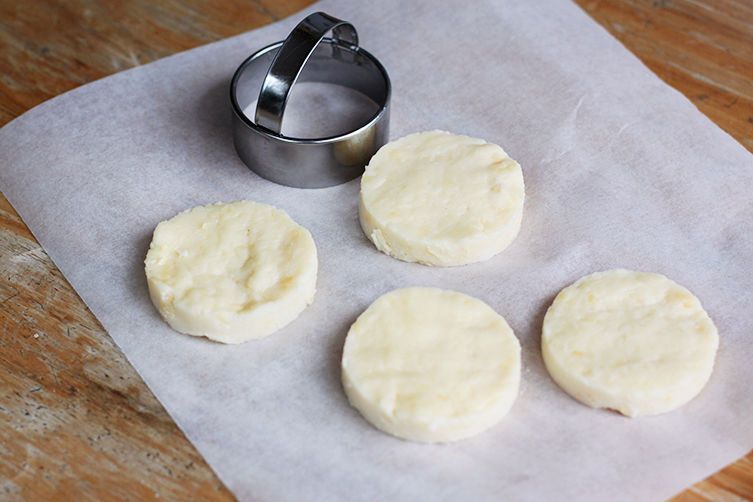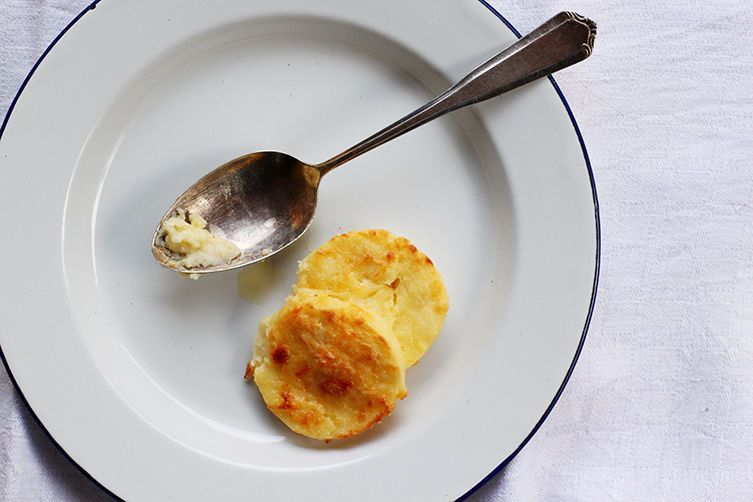Every Tuesday, Italian expat Emiko Davies is taking us on a grand tour of Italy, showing us how to make classic, fiercely regional dishes at home.
Today: A simple, comforting Roman-style semolina gnocchi.

Gnocchi come in all shapes, sizes, and ingredients, depending on where you go in Italy. Quite different from the traditional Northern potato gnocchi or their cousins, ricotta gnocchi, these "Roman-style" gnocchi are made from cooked semolina flour, cooled on a tray, and then cut out into rounds before being baked. It's a considerably easier preparation than making potato gnocchi: They can be prepared well in advance and need to only brown in the oven before serving, making it the perfect dish to have up your sleeve for visitors.

Semolina is a coarse flour made from durum wheat that looks like finely ground cornmeal. In Italy, it is commonly used in pasta making, but it is also used in fillings for tarts and cakes, where it is almost always cooked first with milk and eggs to make a sort of dense cream of wheat -- similar to the process for this recipe.
Once the cooked semolina is spread out flat and cooled, the gnocchi are made by cutting out rounds, then they are simply dotted with a bit of butter and sprinkled with cheese before being baked to golden brown perfection. They make a great side dish as part of a larger meal, or you can make them a bit more substantial by adding Béchamel sauce to the top before sprinkling with cheese. Served with a nice green salad, they can be a meal on their own.
This recipe is inspired by one in Pellegrino Artusi's cookbook, Science in the Kitchen and the Art of Eating Well, from 1891. It's one of those cookbooks that you will find in every Italian kitchen, even now, and its method for making gnocchi alla romana is still very much the same simple way you'll see gnocchi alla romana prepared today. After all, why change a good thing?

Gnocchi alla Romana (Baked Semolina Gnocchi)
Serves 4 as a side dish
2 eggs
1 cup (160 grams) semolina flour
Salt
2 cups (500 milliliters) milk
1/3 cup (40 grams) good melting cheese, such as Gruyère or asiago, grated or diced
1/4 cup (50 grams) butter, diced
1/3 cup (40 grams or about a handful) grated Parmesan cheese
See the recipe (and save and print it) here.
Photos by Emiko Davies




See what other Food52 readers are saying.